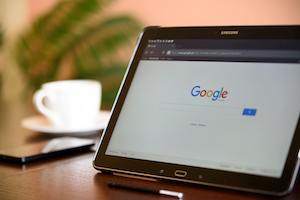When thinking about biometric security, one might picture Mission Impossible-like retinal scanning or fingerprint reading technology a la the iPhone 6. But did you know that your voice can be a key to your security as well? Major banks, including JPMorgan Chase and Wells Fargo, are employing recorded voice messages to help protect your hard-earned money from scammers. Allow me to explain.
If you read this blog regularly, you’ll know that cyber attacks on major organizations are occurring with increased regularity. Armed with stolen data from these attacks, cybercriminals are dialing into financial institutions attempting to answer your challenge questions and extract your earnings. To counter these efforts, banks are arming themselves with a biometric weapon—your voice.
But it’s not just your voice they’re using. It’s the voices of 65 million people. Called “voiceprinting,” this technology is aimed at detecting the bad guys (rather than confirming you are actually who you say you are). So how have banks obtained these voice samples to begin with? Well, it goes a little something like this: “This call may be monitored and recorded…”
While some privacy advocates are questioning the implications of this “bank” of biometric data (like, how else will this database be used in the future?), it’s proving to be astoundingly effective at countering con artists.
In fact, when combined with other fraud detection methods, banks have seen a 90% decrease in the number of calls made by fraudsters. Voice biometric “blacklists” may just be a way of the future.
With all of the breaches that have occurred this past year (financial and otherwise), it’s important to take proactive measures to protect yourself and your savings. Though you can count on your bank to bear some of the burden, you should always take additional steps to protect yourself from the potentiality of fraud. Here’s how:
- Always turn on two-step verification. If your financial institution offers two-step verification for online access, you’d be wise to set it up. This will make it more difficult for hackers to access your account, as they’ll need more than just your password (likely, they’ll need access to your cell phone as well). Additionally, if you do not have a unique passcode or question set up with your bank when you call them, feel free to ask if that is a possibility, as it will help prevent mal do’ers from accessing your account.
- Watch what you share on social networks. Make sure that the questions being asked by your bank to verify your identity (date of birth, address, etc.) are not available online. If you’re not sure what is and isn’t publicly available, try Googling yourself. You might be surprised by what you find.
- Beware of phishing scams. If you receive an email or text message from your bank asking for any personal information, do not reply nor click on any links. All legitimate correspondence originating from your bank will be sent as a hard copy via snail mail and will never ask for such information over digital communications.
To stay up to date on the latest consumer security news, follow @McAfee_Home and @garyjdavis on Twitter and Like us on Facebook.












